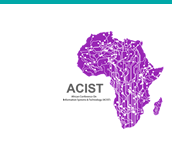Location
Addis Ababa University, Ethiopia
Start Date
2-8-2019 9:00 AM
End Date
2-8-2019 10:30 AM
Description
This paper proposes a tracking framework based on GPS enabled location sensors, the GSM/WCDMA wireless network, and algorithms running in an edge clouds to resolve deadly conflicts that arise in the Africans pastorals community. The paper also proposes an automatic digital identification mechanism that helps resolve conflicts during animals mixup. This algorithmic based solution would totally relief the community from using the traditional identification mechanisms such as hot branding which are known to be cruel to animals. To communicate with the pastorals, the framework takes into consideration the low level literacy of the community as well as their use of low end mobile devices. Moreover, very low economy status, different environments of three kinds of livestocks, day and night variations of animal movements are all factored into the design of the algorithms. This paper shows the general architecture of the system and algorithms to shepherd camels. In a subsequent paper we will add algorithms to shepherd sheep, goats and cattle. Moreover, we will evaluate the solution using simulated as well as real deployments.
Included in
An Electronic Framework to Shepherd the Pastoral Livestock (Resolve Conflicts in Pastoral Communities)
Addis Ababa University, Ethiopia
This paper proposes a tracking framework based on GPS enabled location sensors, the GSM/WCDMA wireless network, and algorithms running in an edge clouds to resolve deadly conflicts that arise in the Africans pastorals community. The paper also proposes an automatic digital identification mechanism that helps resolve conflicts during animals mixup. This algorithmic based solution would totally relief the community from using the traditional identification mechanisms such as hot branding which are known to be cruel to animals. To communicate with the pastorals, the framework takes into consideration the low level literacy of the community as well as their use of low end mobile devices. Moreover, very low economy status, different environments of three kinds of livestocks, day and night variations of animal movements are all factored into the design of the algorithms. This paper shows the general architecture of the system and algorithms to shepherd camels. In a subsequent paper we will add algorithms to shepherd sheep, goats and cattle. Moreover, we will evaluate the solution using simulated as well as real deployments.



